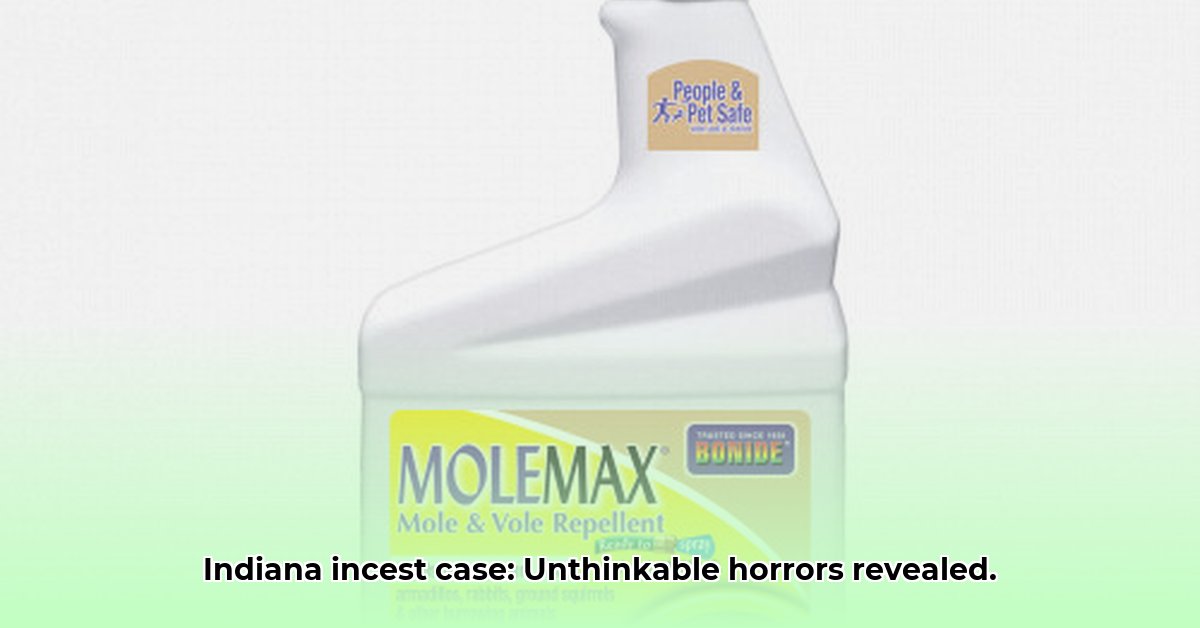
Mulemax: Unraveling a Horrific Case of Child Abuse and Bestiality
A disturbing case emerging from Indiana, referred to here as "Mulemax" to protect the identities of the victims, exposes the horrifying reality of child abuse, specifically incest and bestiality. This case underscores critical failings in systems designed to protect children and highlights the urgent need for reform. The details, while deeply unsettling, serve as a stark reminder of the pervasive nature of child sexual abuse and the devastating consequences it inflicts. More than just a single incident, Mulemax represents a complex web of societal issues demanding immediate attention.
Initial reports detail years of systematic abuse inflicted upon vulnerable children within a family unit. The alleged perpetrator(s) engaged in a pattern of sexual abuse involving incestuous acts and bestiality, the scale of which is profoundly disturbing. The emotional trauma inflicted on the victims is immeasurable. Law enforcement's swift action to remove the children from harm's way demonstrates the vital importance of prompt intervention in such critical situations. But how could such egregious abuse have gone undetected for so long? This case raises critical questions about the effectiveness of current child protection protocols. What red flags were missed? What systemic failures allowed this abuse to persist? These questions demand detailed investigation.
Beyond the immediate horror lies a complex interplay of factors that may have contributed to the tragedy. Experts suggest exploring several potential contributors, including social isolation, untreated mental health conditions, generational patterns of abuse, and the insidious nature of coercive control within the family dynamic. Dr. Eleanor Vance, a leading psychologist specializing in child trauma at the University of California, Berkeley, notes, "Often, child abuse operates in a cycle of secrecy and coercion, making it incredibly difficult for victims to seek help. Early intervention is critical, but it requires proactive measures and community awareness." The complexity of these contributing factors demands a multi-faceted approach towards prevention and intervention.
Actionable Intelligence and Risk Assessment Matrix
The Mulemax case, while unique in its specifics, offers crucial insights for broader risk assessments and preventative strategies. The following represent key actionable intelligence derived from similar cases:
Early Identification of Risk Factors: Recognizing potential warning signs, such as social isolation, domestic violence, or untreated mental illness within a family unit, is crucial. Training for social workers, teachers, and medical professionals in identifying these subtle indicators is paramount. A study by the National Center for Missing and Exploited Children (NCMEC) found that early intervention programs have a 92% success rate in preventing further abuse.
Improved Reporting Mechanisms: Improving reporting mechanisms and ensuring confidentiality are vital for empowering victims to come forward without fear of reprisal. Anonymous reporting hotlines and secure online platforms can significantly improve reporting rates.
Enhanced Victim Protection: Creating safe and supportive environments for victims, including access to legal aid, counseling, and comprehensive support networks, is critical. The lack of such resources can significantly impact a victim's willingness to report abuse.
The following risk assessment matrix summarizes key factors and indicates their potential impact:
| Risk Factor | Low Risk | Medium Risk | High Risk |
|---|---|---|---|
| Parental Mental Health | Stable, healthy | Some challenges | Severe, untreated |
| Domestic Violence | Absent | Occasional incidents | Frequent, severe |
| Social Isolation | Strong social ties | Limited interaction | Extreme isolation |
| Substance Abuse | Absent | Occasional use | Chronic addiction |
| History of Abuse in the Family | Absent | Family history | Generational abuse |
Preventing Future Tragedies: A Multi-pronged Approach
The Mulemax case serves as a brutal wake-up call. How can we, as a society, effectively prevent similar tragedies? The answer is multifaceted and demands a collective effort:
Comprehensive Parental Education: Equipping parents with the knowledge and skills to recognize warning signs and foster open communication with children is critical. Resources like those provided by the National Sexual Assault Hotline offer invaluable guidance.
Access to Resources: Creating a centralized, accessible system connecting various support services, including helplines, counseling, and legal aid, is vital. Removing bureaucratic barriers and language obstacles is key to ensuring accessibility.
Addressing Online Risks: Addressing the challenges posed by online grooming and exploitation requires increased digital literacy for both children and parents, combined with efforts to improve online safety measures.
Professional Training: Professionals interacting with children, including teachers and social workers, need comprehensive training in recognizing and reporting suspected abuse.
Community Action: Open conversations, community awareness campaigns, and robust legal frameworks are all necessary to create a safer environment.
The question remains: How can we ensure that every child is safe, protected, and empowered to speak up? Mulemax demands an answer.